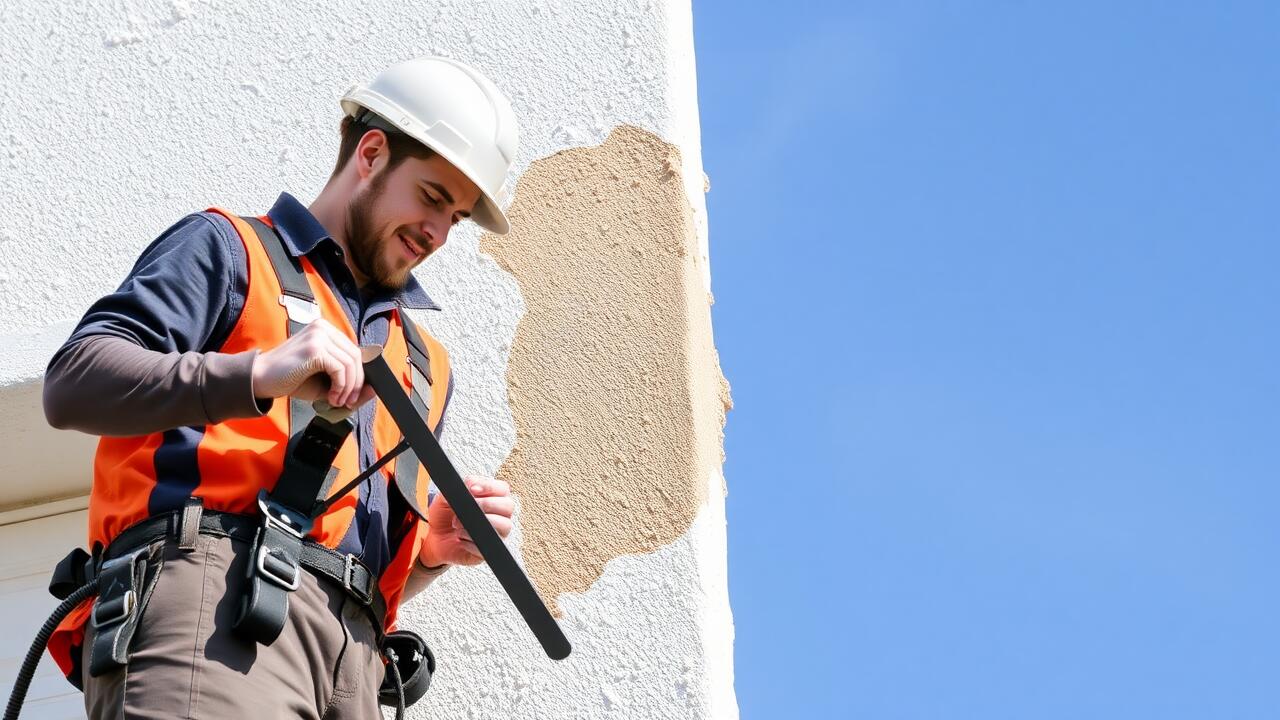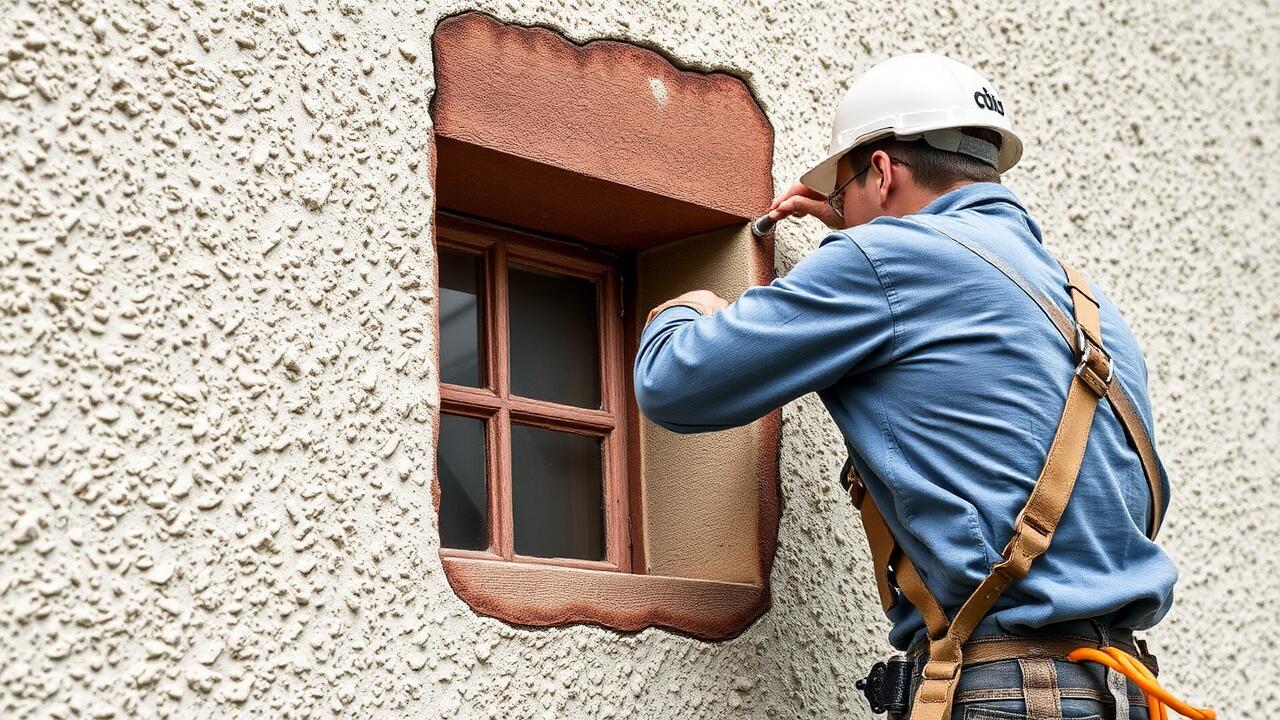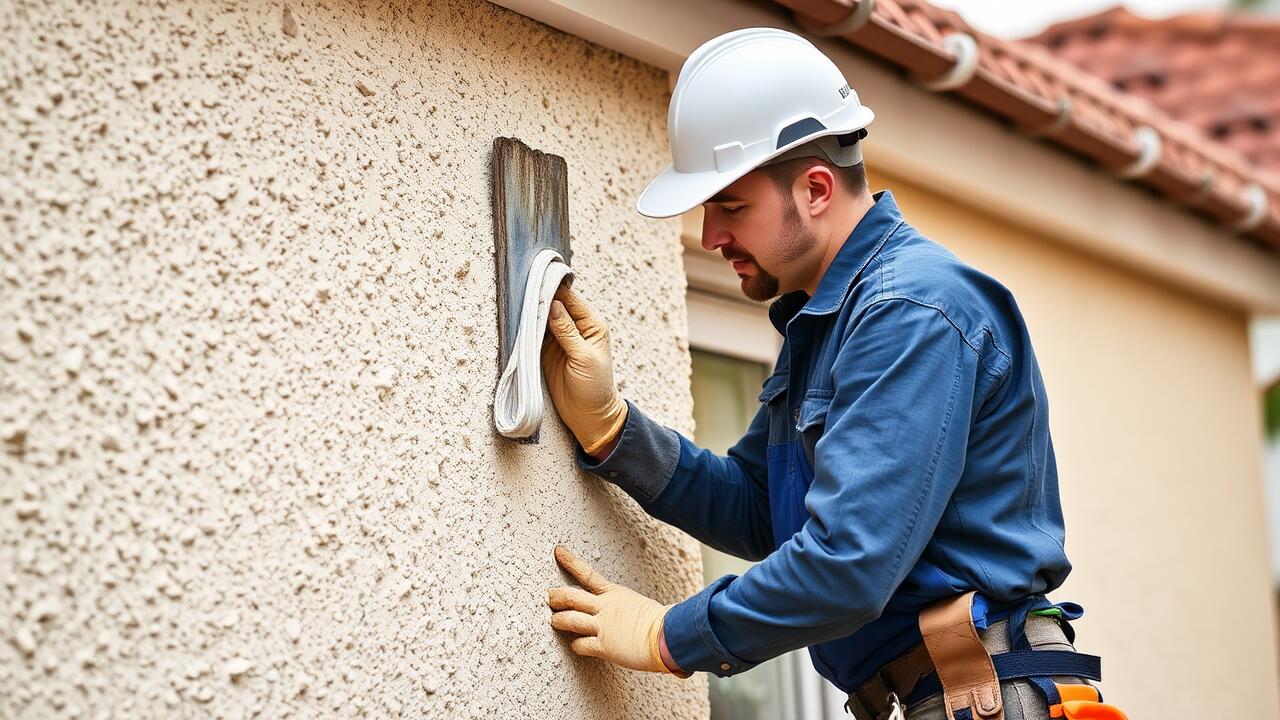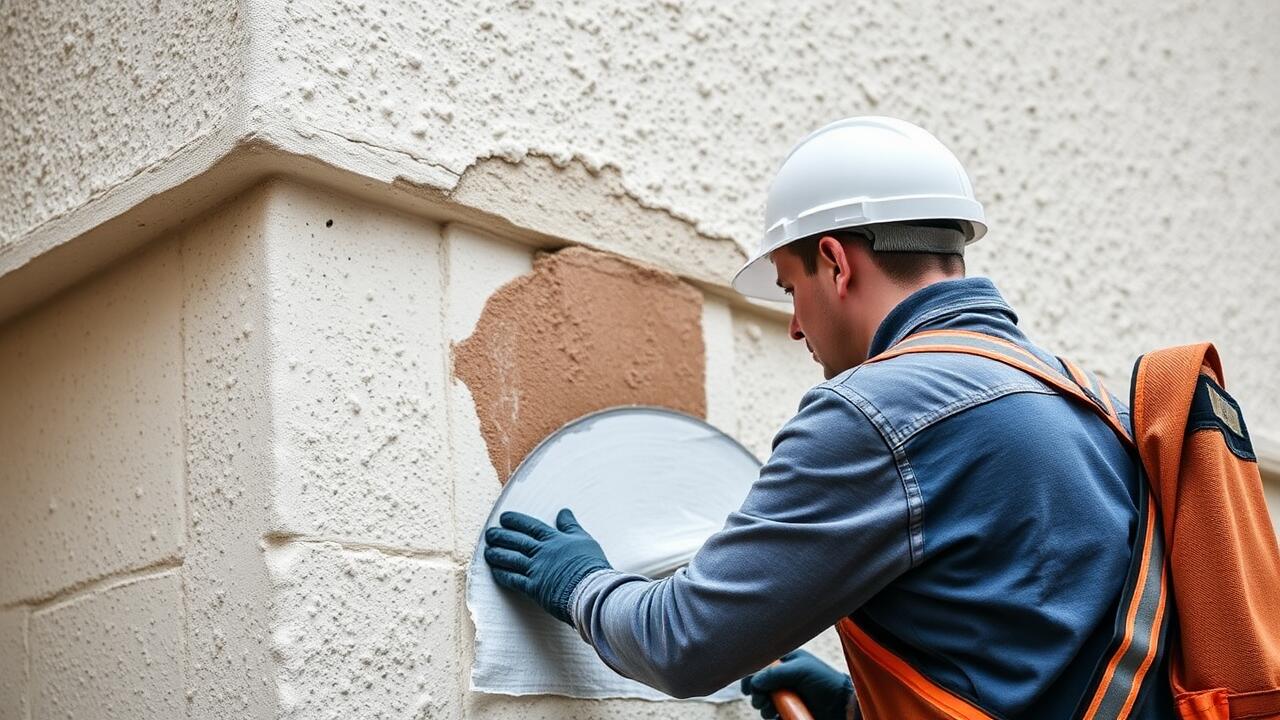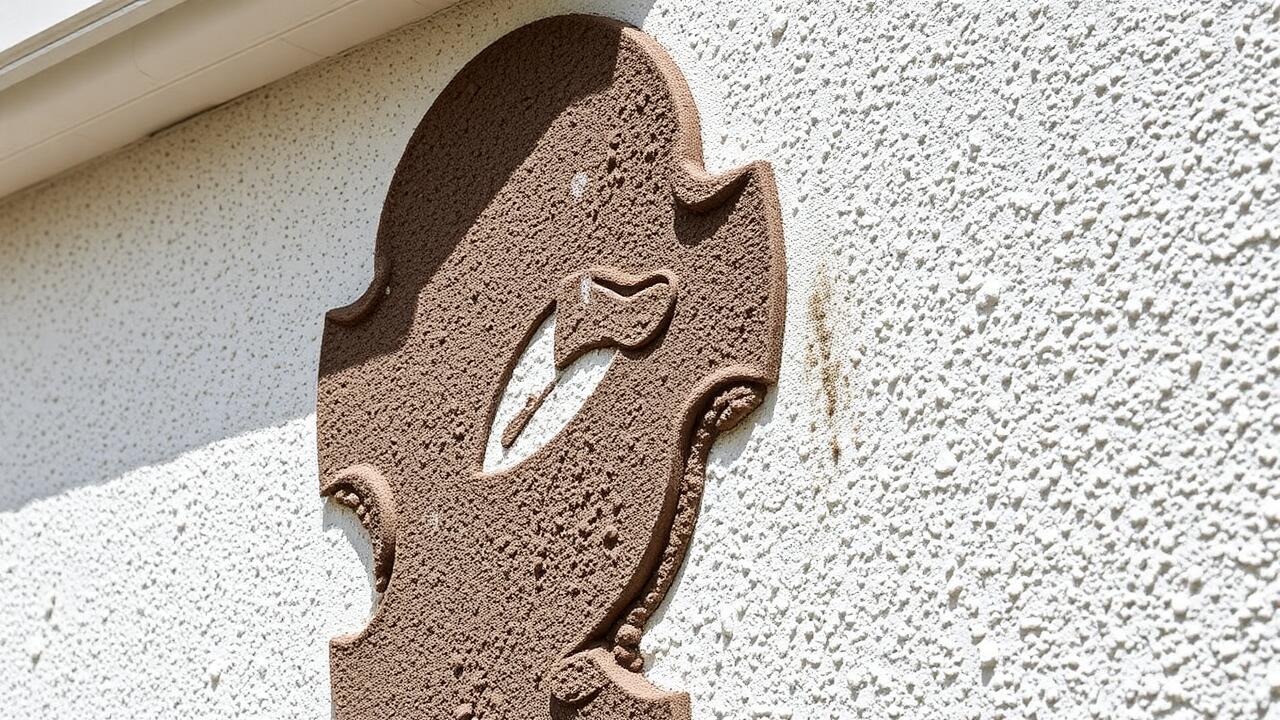
Techniques for Repairing Bulging Stucco
Repairing bulging stucco requires careful assessment and execution to restore the material's integrity and appearance. Homeowners often begin by identifying the cause of the bulging, which can stem from moisture intrusion, improper installation, or structural movement. Once the source is addressed, the repair process can proceed, typically involving removing the damaged sections of stucco and preparing the underlying surface for reapplication. It's essential to ensure a sound structure beneath the stucco to prevent recurrence of the issue.
For those dealing with bulging stucco in areas like Tarzana, Los Angeles, patching methods may vary depending on the extent of the damage. Minor bulges can often be managed with effective patching techniques that involve applying a fresh layer of stucco to the affected area. However, significant bulging might necessitate a more extensive removal process followed by a complete reapplication of stucco. Ensuring alignment with the existing texture and color is crucial for achieving a seamless finish that blends with the surrounding surface.
Step-by-Step Guide to Removal and Reapplication
Begin by assessing the extent of the bulging stucco. Use a utility knife or chisel to carefully cut away the affected areas. This process may involve creating a clean edge around the damaged stucco. It's essential to remove any loose or crumbling material to prepare for proper adhesion of the new application. After removing the damaged sections, inspect the underlying structure for any water damage or mold that might need attention before proceeding.
Next, mix a batch of stucco patching material according to the manufacturer’s instructions. Apply the new stucco to the prepared area, ensuring a smooth transition with the surrounding wall. Feather the edges for a seamless finish. Allow the patch to cure according to guidelines. For those in need of specialized services, consider contacting local professionals for Stucco Repair Tarzana, Los Angeles, who can provide expertise in restoring the integrity and appearance of your stucco.
Patching Small Areas
Patching small areas of bulging stucco is a straightforward process that can restore the integrity of your home’s exterior. Begin by cleaning the damaged section to remove any loose material and debris. A wire brush or scraper can be effective here. It’s essential to ensure the surface is dry before applying a new layer of stucco. For minor issues, a pre-mixed stucco patch can provide a quick solution, making it easy to blend with the existing finish.
Once the patch is applied, smooth it out using a trowel or putty knife. This will help create a seamless transition between the old and new stucco. If you're located in areas like Pacific Palisades, Los Angeles, where the coastal climate can affect stucco, it’s vital to address any minor imperfections promptly. This not only maintains the aesthetic appeal but also prevents further damage from moisture intrusion. Regular maintenance and timely repairs can prolong the life of your stucco and enhance your property’s curb appeal.
Methods for Minor Repairs and Aesthetic Touch-Ups
For minor bulging and aesthetic imperfections in stucco, simple patching methods can often restore the surface's appearance. Begin by cleaning the affected area to remove dust, dirt, and loose debris. Once clean, use a stucco repair compound to fill in any gaps or cracks. Apply the compound smoothly with a trowel, ensuring it blends seamlessly with the surrounding texture. For areas that require a more precise finish, consider using a sponge or brush to mimic the original stucco's grain.
To achieve a cohesive look, matching the color is essential. Use a paint or tinted finish designed for stucco surfaces to blend the patch with the existing wall. After applying the patch and allowing it to dry, inspect the repaired area from different angles. If any discrepancies in texture or color remain, additional touch-ups may be needed. For those looking for specific expertise in the area, searching for "Stucco Repair Tarzana, Los Angeles" can connect you with local professionals experienced in stucco finishes.
When to Seek Professional Help
Homeowners should consider seeking professional help when they notice excessive bulging, extensive cracking, or deterioration of the stucco surface. These issues often indicate underlying problems with moisture infiltration or structural integrity, which can lead to more significant damage if left unchecked. Attempting to handle these complications without expert knowledge may worsen the situation and result in increased repair costs.
If the damage covers a large area or involves multiple sections of the home, it is best to consult a professional service. Experts can assess the extent of the damage and determine whether it requires specialized treatment. Residents in need of reliable assistance can find solutions through providers like Stucco Repair Studio City, Los Angeles, ensuring thorough inspection and effective repair methods tailored to their unique situation.
Indicators That Require Expert Intervention
Certain signs indicate that a stucco issue has progressed beyond simple DIY fixes. When the bulging is accompanied by cracks larger than a quarter-inch, water intrusion becomes a serious concern. If moisture becomes trapped behind the stucco, it may lead to larger structural problems, which are often not visible until significant damage has occurred. Mold growth and wood rot may also develop, requiring immediate attention from professionals.
Homeowners should also consider expert intervention if they notice widespread bulging or if the problem affects multiple areas of the home. These changes could suggest underlying issues with the foundation or improper installation. Consulting a specialized service like Stucco Repair Studio City, Los Angeles, can ensure a thorough assessment and proper repair techniques. Relying on experienced professionals can prevent further complications and enhance the longevity of the repair.
FAQS
What causes bulging stucco?
Bulging stucco can be caused by a variety of factors, including moisture accumulation, improper installation, structural settling, or the use of low-quality materials. Inadequate drainage and extreme weather conditions can also contribute to this issue.
How can I tell if my stucco needs repair?
Signs that your stucco needs repair include visible bulging or cracking, peeling paint, mold growth, or water stains on the interior walls. If you notice any of these indicators, it's important to address the issue promptly to prevent further damage.
Can I repair bulging stucco myself?
Minor repairs and aesthetic touch-ups can often be handled by homeowners with basic DIY skills. However, for significant bulging or structural concerns, it is recommended to seek professional help to ensure proper diagnosis and repair techniques are employed.
What tools do I need for stucco repair?
Common tools for stucco repair include a trowel, putty knife, wire brush, spray bottle for water, mixing container, and a hawk. For larger projects, you may also need a grinder or chisel, depending on the extent of the damage.
How long can I expect a stucco repair to last?
The longevity of a stucco repair largely depends on the quality of materials used and the expertise of the person performing the repair. Generally, a well-executed repair can last anywhere from 5 to 20 years, provided that proper maintenance is carried out.
